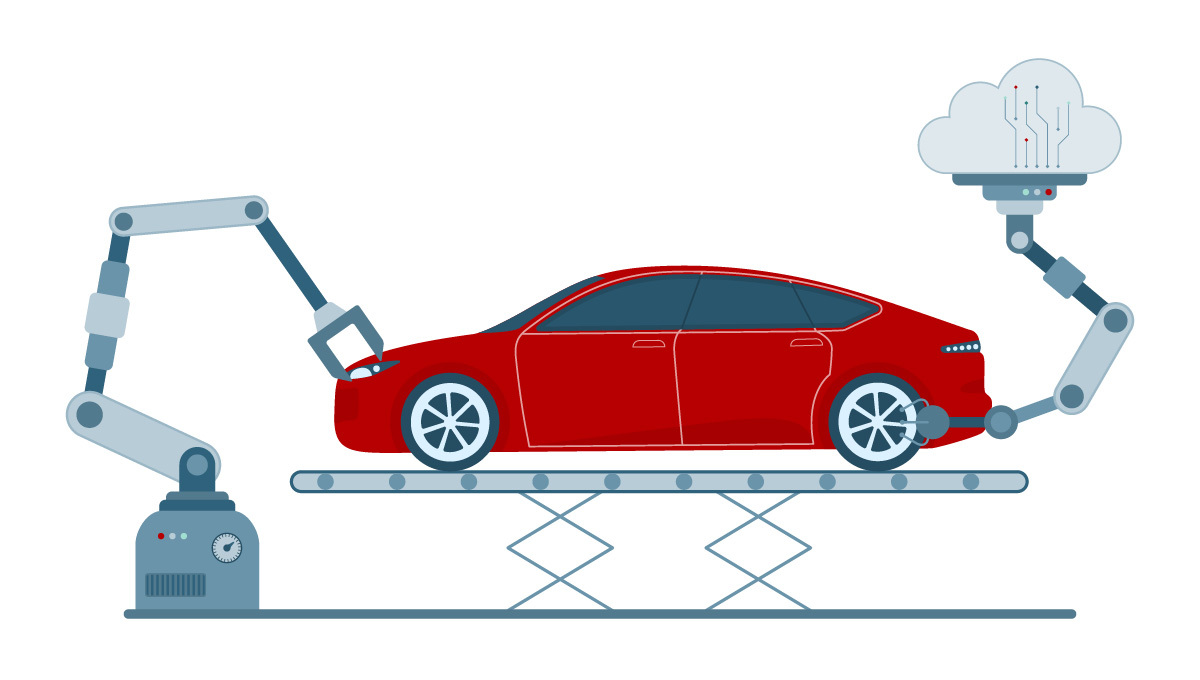
The automotive sector is undergoing a paradigm shift, transitioning from its traditional hardware focus to a software-centric industry. To remain relevant and competitive, automotive companies must embrace digital transformation across their operations. Adapting to technological innovations and making strategic decisions is key to thriving in this rapidly evolving environment.
In this new era, simply keeping pace is not enough. Organizations must proactively navigate the changing market landscape, prioritizing software solutions that enhance efficiency and drive innovation. The future success of automotive companies hinges on their ability to leverage technology effectively.
This blog outlines four critical areas for igniting a connected work revolution, positioning automotive organizations at the forefront of industry change. By adopting Value Stream Management (VSM), companies can optimize workflows, enhance collaboration, and maintain a laser focus on delivering customer value.
A value stream encompasses the entire process from product conception to customer delivery and feedback. By refining these value streams, organizations can unlock new levels of productivity, innovation, and agility, empowering them to excel in the dynamic automotive landscape.
Streamlining Automotive Innovation: A Value Stream Management Approach
The automotive industry is rapidly transitioning into a software-driven sector, with CASE (Connected, Autonomous, Shared, Electric) technologies at the forefront. This shift demands a fundamental change in how automotive organizations approach software development and delivery. The principles of connected work and Industry 4.0 are reshaping not just production processes, but also the entire software lifecycle within these companies.
In this new paradigm, automotive organizations must prioritize agile software delivery practices, continuous integration and deployment (CI/CD), and DevOps methodologies. The ability to rapidly develop, test, and deploy software updates has become a critical competitive advantage.
VSM has emerged as a crucial framework to guide this software-centric transformation. It helps automotive organizations optimize their software delivery pipelines, from initial design and development through to deployment and customer feedback. VSM supports this evolution by promoting principles of connected work, streamlined workflows, and cross-functional collaboration, all while maintaining a focus on delivering value to customers through software innovations.
By leveraging VSM, automotive organizations can enhance their software delivery capabilities, fostering innovation and responsiveness. This approach enables them to better integrate their digital and physical operations, allowing for more efficient and adaptive responses to emerging software-related challenges and opportunities in the automotive sector.
Revolutionizing Automotive Software Delivery: Four Key Areas for Innovation and Competitive Edge
1. Speed and Scalability
Value Stream Management (VSM) helps automotive companies accelerate operations and scale efficiently. By offering visibility across value streams, VSM identifies bottlenecks, streamlines workflows, and drives continuous improvement. It facilitates automation and eliminates manual tasks, speeding up information and material flow through the supply chain.
VSM enhances cross-functional collaboration, aligning physical and digital teams across manufacturers and suppliers for seamless integration. As operations scale, VSM ensures synchronized, efficient movement across design, engineering, and manufacturing. This builds a scalable, agile foundation for automotive companies in a fast-evolving industry.
2. Strategic Decision-Making
VSM provides visibility into the software delivery process, helping leaders make strategic decisions by aligning development efforts with business goals. It offers real-time insights into the software delivery pipeline, allowing for proactive resource optimization in the fast-paced automotive sector.
VSM also supports prioritization of features and management of technical debt, ensuring that development focuses on impactful, innovation-driven initiatives. By leveraging VSM, automotive companies can improve decision-making, delivering high-quality software solutions that meet market demands and drive long-term success in the digital automotive landscape.
3. Risk Reduction
VSM is a valuable risk mitigation tool for automotive companies. It provides visibility into resource use, costs, and constraints, allowing organizations to identify and address risks early. In a highly regulated industry, VSM ensures compliance with evolving regulations, reducing the risk of violations or recalls. It also helps manage economic risks by optimizing operations and maintaining financial stability.
By implementing VSM, automotive companies can build a proactive risk management framework that mitigates immediate risks and fosters long-term resilience in a changing industry.
4. Remediation of Technical Debt
VSM gives organizations a clear view of where technical debt is accumulating and its impact on value delivery. Its visualization capabilities help automotive companies map software ecosystems, highlighting legacy code or outdated systems that hinder efficiency.
VSM allows organizations to visualize the resource capacity they allocate to technical debt and to prioritize it to ensure it does not negatively impact customer experience. This ability to visualize technical debt also supports better decision making, helping companies understand the impact of prioritization decisions.
By using VSM, automotive companies can manage technical debt proactively, reducing risks and enhancing their ability to innovate and respond to market demands.
Slutsats
As the automotive industry stands at the crossroads of unprecedented change and opportunity, understanding and addressing these emerging challenges is imperative for staying ahead of the curve. By adopting a VSM approach, automotive organizations can address the critical challenges of efficient software delivery, digital-physical integration, market anticipation, and data-driven decision-making, positioning themselves at the crest of the industry and ready for the next wave of innovation.
To dive deeper into how VSM can revolutionize your automotive software delivery, download our comprehensive whitepaper, Shifting Gears: Transforming Traditional Auto Manufacturing in the Digital Age. Discover the strategies and insights that can propel your organization to the forefront of the automotive industry’s digital transformation.




